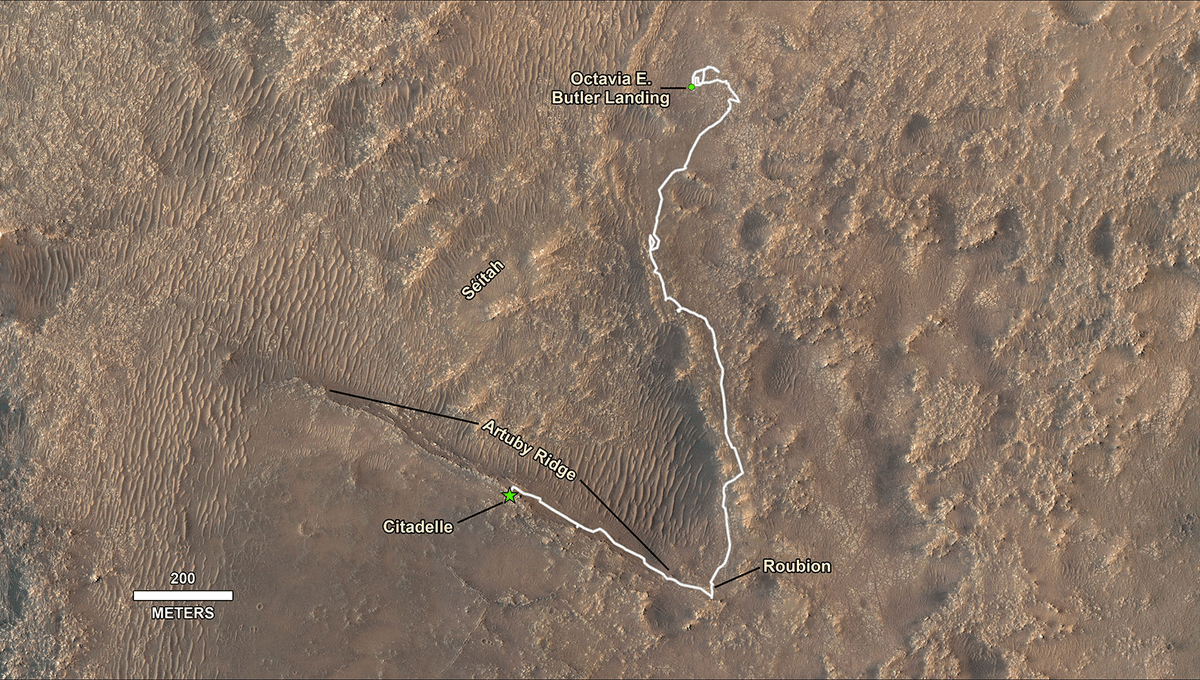
Organic molecules found by the Perseverance rover in Jezero Crater on Mars are more varied than those previously found in Gale Crater by Curiosity and in meteorites knocked off Mars. The molecules detected could have formed without the presence of life, but they do show the planet once had more complex chemistry than previously recognized, reducing the step required for life to occur.
The different meanings of the word “organic” create a lot of confusion. When shopping, it means food grown without artificial fertilizers or pesticides and other definitions include: “Relating to, or derived from, living organisms.” Yet to a chemist, any carbon-containing molecule is organic, including those found in space with no association with life. Consequently, reporting of organic compounds can lead people to jump to unjustified conclusions.
Nevertheless, as far as we know, all life is organic, and for it to exist, complex organic molecules are a prerequisite. The more of them we find, the better the chances. A new analysis of materials extracted by the Perseverance Rover from the floor of Jezero Crater indicates Mars has a greater variety than previously observed.
In its 29 months on Mars, Perseverance has sampled three main rock formations. Some of these have been stowed so they can be collected by future sample-return missions for analysis in laboratories on Earth. While Perseverance can’t match the sophistication available here, it’s also performing its own investigations with the instruments it has, and appears to have hit paydirt within the Máaz and Séítah formations.
“We report specific fluorescence-mineral associations consistent with many classes of organic molecules occurring in different spatial patterns within these compositionally distinct formations,” the authors write, “potentially indicating different fates of carbon across environments.”
Perseverance exposes its samples to deep ultraviolet radiation to observe the wavelengths at which they fluoresce, indicating their composition. Based on this, the authors estimate organic compounds make up 20 parts per million of the Máaz formation, but just 2ppm of Séítah.
Not all the organic molecules have been identified, but the number of wavelengths at which fluorescence was seen indicates a lot of different molecules are present.
With carbon being produced in stars once they have finished making hydrogen into helium, its presence on Mars is no surprise. However, the processes to incorporate it into organic compounds are not well understood, particularly the more complex versions. The paper notes multiple explanations for their presence in Martian meteorites have been offered, but we still don’t know whether it happened in water, through the reduction of carbon dioxide, or the fall of materials from space.
Both formations are thought to have watery origins, and differences between the molecules in the two “indicate that different aqueous alteration or deposition processes occurred,” the paper notes.
Most importantly, “Key building blocks for life may have been present over an extended period of time (from at least roughly 2.3–2.6 [billion years ago]).” A biological source for the molecules may be unlikely, although the paper says it can’t be ruled out, but the presence of these materials makes it more likely for it to have got started somewhere on Mars at some point in time.
The paper is published in Nature.
Source Link: Perseverance Discovers More Evidence Of Building Blocks Of Life On Mars